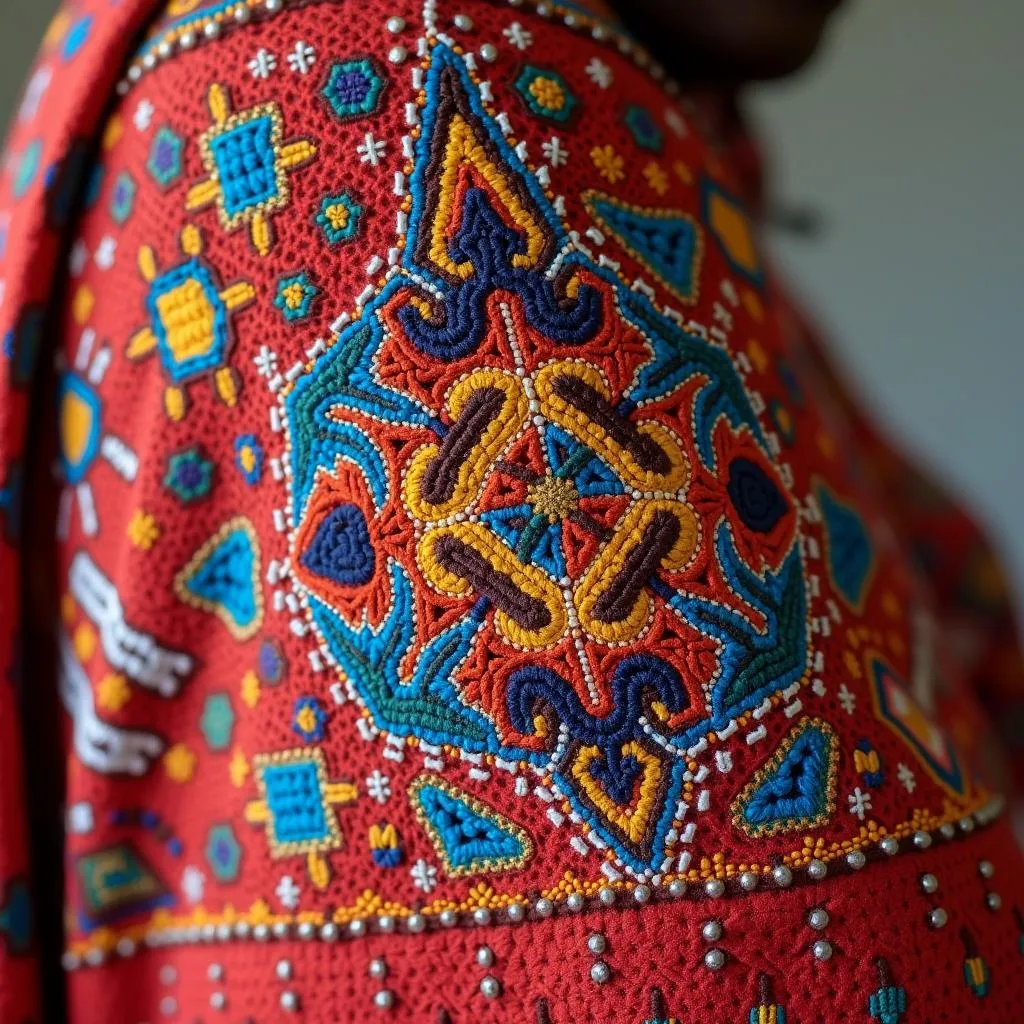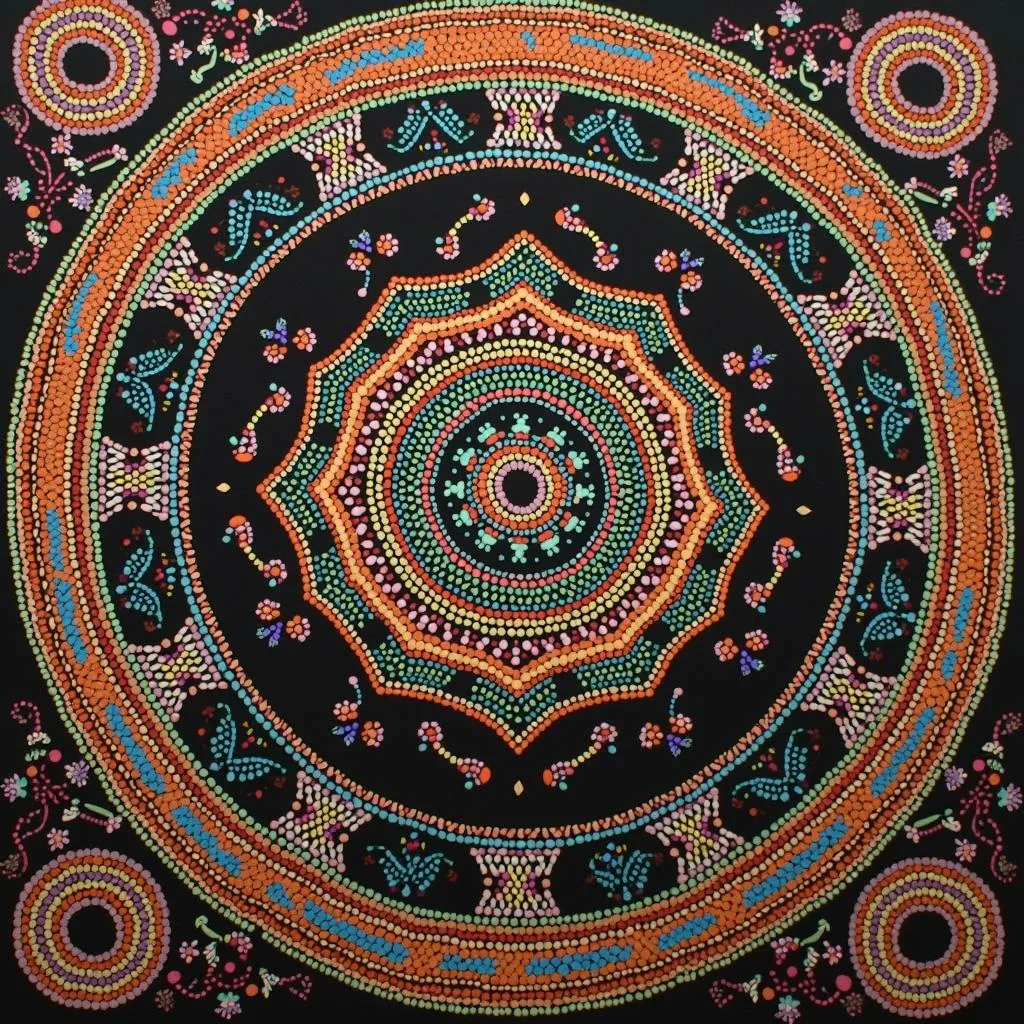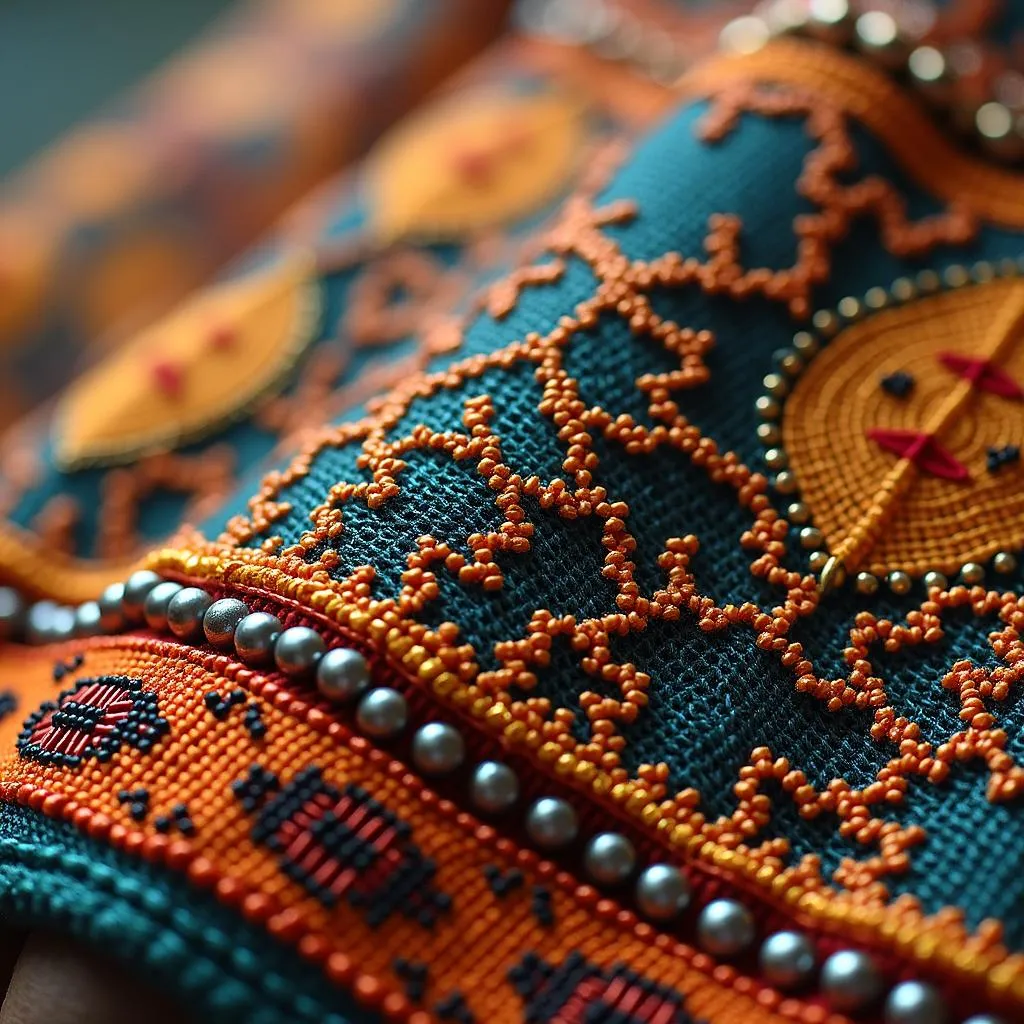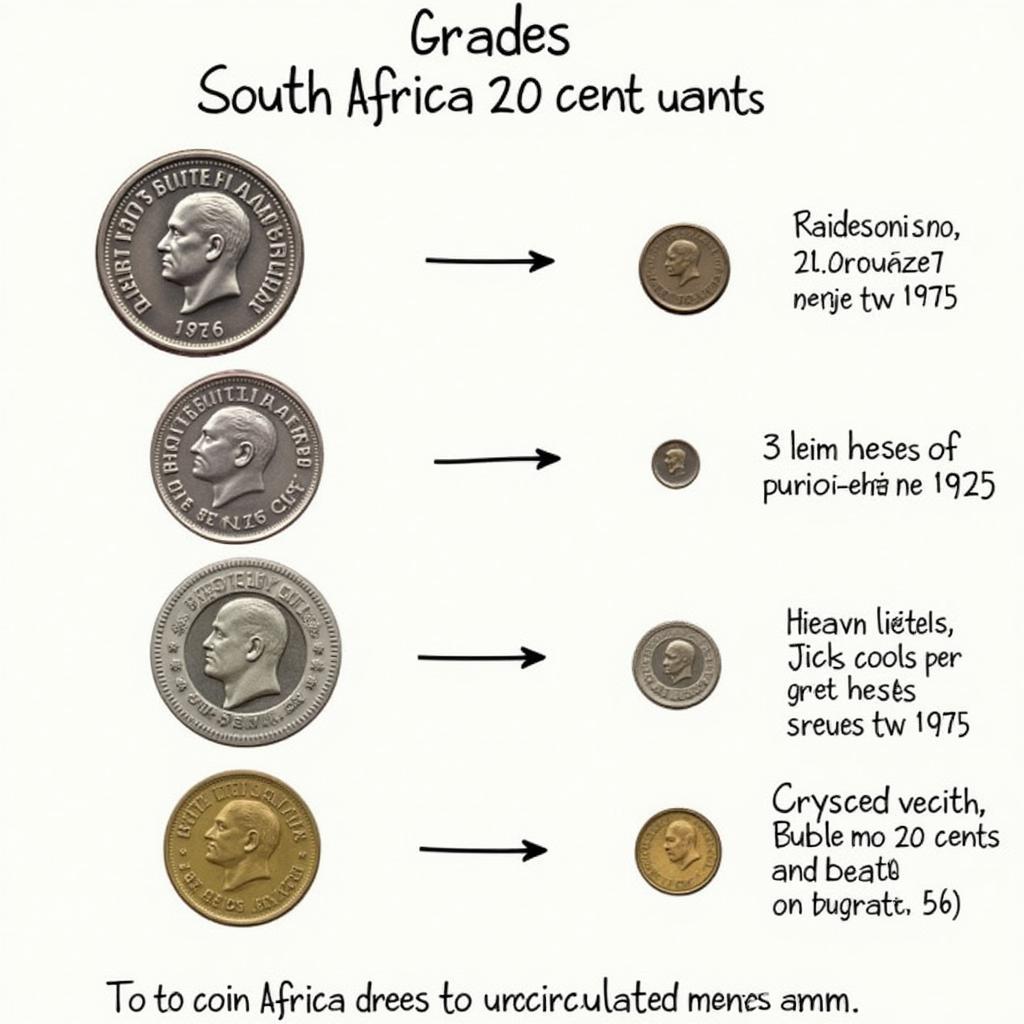The Art of African Hand Embroidery Patterns: A Journey Through Rich History and Cultural Expression
African Hand Embroidery Patterns are more than just decorative stitches. They are a living testament to the continent’s rich history, cultural beliefs, and artistic traditions. This vibrant art form is interwoven with the fabric of everyday life, adorning clothing, household items, and even ceremonial objects.
Let’s embark on a journey to explore the fascinating world of African hand embroidery patterns, unraveling their stories and appreciating their aesthetic beauty.
A Tapestry of Cultural Heritage
African hand embroidery patterns are as diverse as the continent itself. Each region boasts its own unique styles, motifs, and techniques, reflecting the distinct identities of various tribes and ethnic groups.
The Language of Symbolism
These patterns aren’t just visually appealing; they are also imbued with meaning. Each stitch, color, and motif carries a symbolic message, often conveying stories, beliefs, and rituals passed down through generations.
For example, in many West African cultures, geometric patterns represent the interconnectedness of life and the universe. Circular motifs symbolize unity and community, while zigzag lines represent the journey of life.
Beyond Decoration: A Reflection of Everyday Life
African hand embroidery isn’t confined to special occasions. It’s an integral part of daily life, weaving itself into clothing, blankets, bags, and household items. The patterns are often incorporated into traditional garments worn for ceremonies, festivals, and everyday activities.
For instance, in the Maasai community of Kenya and Tanzania, beaded and embroidered clothing is a testament to their cultural heritage. The intricate patterns on their garments symbolize their social status, lineage, and bravery.
Unraveling the Techniques
African hand embroidery is a testament to the resourcefulness and artistic ingenuity of the continent’s people. The techniques vary across regions, often utilizing locally available materials and tools.
Needle and Thread: The Foundation of Creation
The most common technique involves using a needle and thread to create intricate patterns. The stitches are often executed with remarkable precision, creating textures and visual effects that are both stunning and meaningful.
Embroidered Beads: Adding Sparkle and Symbolism
Embroidered beads are another hallmark of African hand embroidery. These beads, often made from shells, seeds, or glass, are meticulously sewn onto fabric, adding a touch of sparkle and dimension to the patterns.
The Power of Color
Color is an essential element in African hand embroidery. Each hue has symbolic significance, reflecting the cultural values and beliefs of the community. For example, red often represents strength and vitality, while blue symbolizes peace and harmony.
Preserving the Legacy: Keeping Traditions Alive
African hand embroidery is not only a beautiful art form but also a vital part of cultural heritage. The tradition is being passed down from generation to generation, ensuring that the stories and symbolism woven into the patterns continue to inspire and connect communities.
“The art of hand embroidery is more than just stitches; it’s a way of life,” shares Amina Njoroge, a renowned Kenyan textile artist. “It’s about preserving our heritage and connecting with our ancestors through every thread and pattern.”
Uncovering the Magic: Exploring African Hand Embroidery Today
If you’re looking to explore the beauty and meaning behind African hand embroidery, there are several ways to connect with this vibrant art form:
- Visit local markets and craft fairs: Many African countries host vibrant markets where you can encounter artisans showcasing their exquisite hand embroidery.
- Seek out online resources: Numerous online platforms and websites feature information on African hand embroidery, showcasing different styles, techniques, and cultural interpretations.
- Support artisans directly: Consider purchasing handcrafted embroidered items from local artisans, directly contributing to the preservation of this valuable tradition.
Frequently Asked Questions (FAQs)
Q: What are some common motifs used in African hand embroidery patterns?
A: Geometric patterns, animal motifs, and human figures are prevalent in African hand embroidery. These motifs often represent beliefs about nature, ancestors, and the spiritual world.
Q: What is the significance of color in African hand embroidery?
A: Color plays a crucial role in conveying meaning and symbolism in African hand embroidery. Each color holds specific cultural significance, reflecting the beliefs and values of the community.
Q: How can I learn more about African hand embroidery?
A: There are many resources available to learn about African hand embroidery. You can explore online tutorials, visit museums showcasing African art, or connect with local artisans who can teach you the traditional techniques.
 Maasai woman wearing traditional embroidered clothing
Maasai woman wearing traditional embroidered clothing
 Geometric patterns in African hand embroidery
Geometric patterns in African hand embroidery
 Detailed close-up of beaded embroidery
Detailed close-up of beaded embroidery
Let African hand embroidery patterns be your guide as you explore the rich tapestry of cultural expression and artistic heritage that thrives on the continent. From the vibrant colors to the intricate stitches, these patterns offer a captivating glimpse into the soul of Africa.

